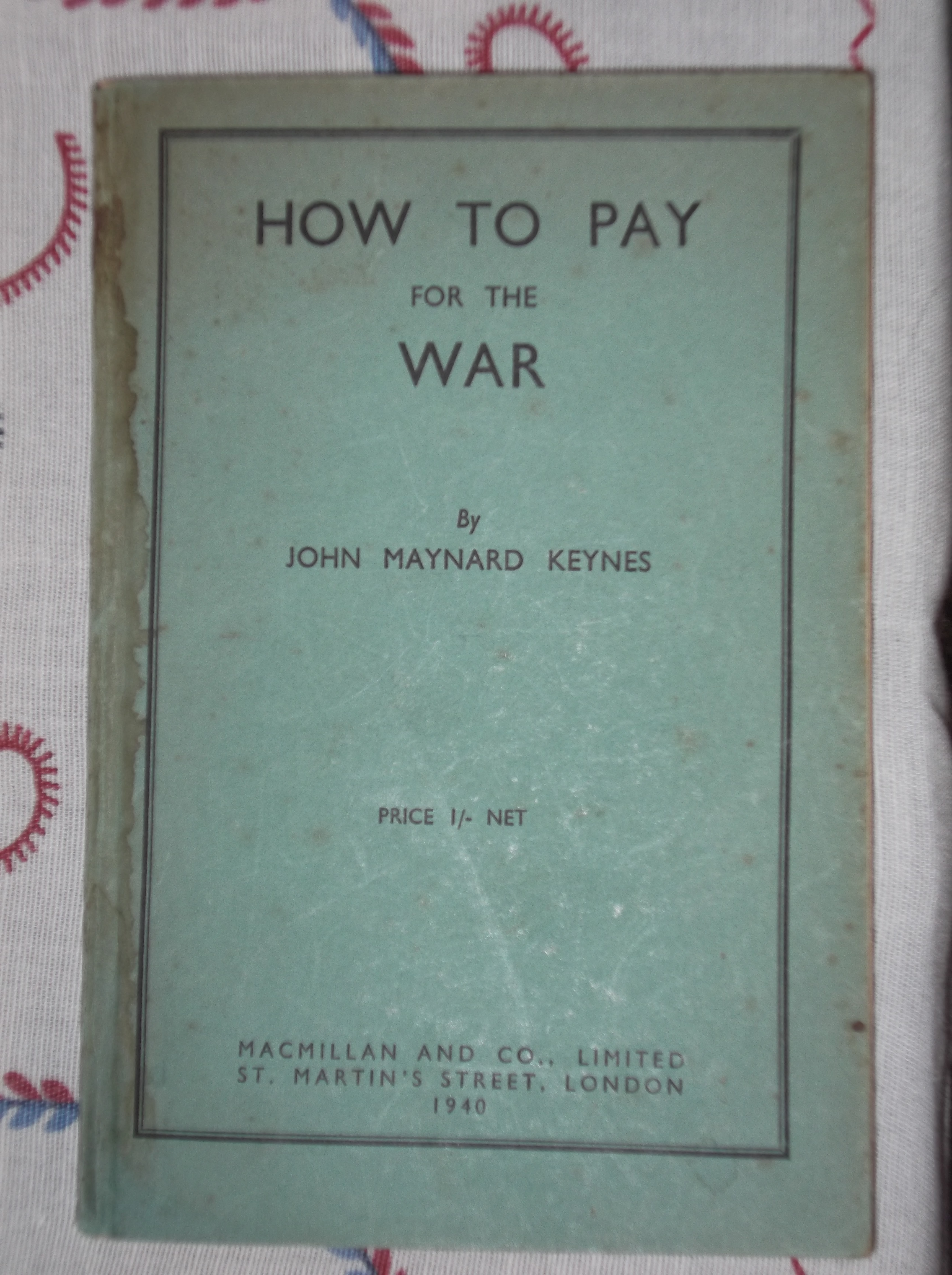How to Pay for the War on:
[Wikipedia]
[Google]
[Amazon]
 ''How to Pay for the War: A Radical Plan for the Chancellor of the Exchequer'' is a book by
''How to Pay for the War: A Radical Plan for the Chancellor of the Exchequer'' is a book by
John Maynard Keynes
John Maynard Keynes, 1st Baron Keynes, ( ; 5 June 1883 – 21 April 1946), was an English economist whose ideas fundamentally changed the theory and practice of macroeconomics and the economic policies of governments. Originally trained in ...
, published in 1940 by Macmillan and Co., Ltd. It is an application of Keynesian thinking and principles to a practical economic problem and a relatively late text. Keynes died in 1946.
Summary
In ''How to Pay for the War'', John Maynard Keynes describes a macroeconomic strategy of howBritain
Britain most often refers to:
* The United Kingdom, a sovereign state in Europe comprising the island of Great Britain, the north-eastern part of the island of Ireland and many smaller islands
* Great Britain, the largest island in the United King ...
, a nation with a population at the time of 40 million people, could conduct a long war against Germany
Germany,, officially the Federal Republic of Germany, is a country in Central Europe. It is the second most populous country in Europe after Russia, and the most populous member state of the European Union. Germany is situated betwe ...
, a nation of 80 million. At the time ''How to Pay for the War'' was written, neither the United States
The United States of America (U.S.A. or USA), commonly known as the United States (U.S. or US) or America, is a country primarily located in North America. It consists of 50 states, a federal district, five major unincorporated territori ...
nor the Soviet Union
The Soviet Union,. officially the Union of Soviet Socialist Republics. (USSR),. was a List of former transcontinental countries#Since 1700, transcontinental country that spanned much of Eurasia from 1922 to 1991. A flagship communist state, ...
were at war with either Germany or Japan. As a result, the first step for Britain to effectively conduct a war against Germany was to mobilize all its resources for production. Thus, the first two chapters of ''How to Pay for the War'', are an argument for the need for full employment and chapter 3, ''Our Output Capacity and The National Income'', is ''a manual to achieve full employment''.
Keynes maintained, however, that the resources of Britain, even at full employment, would not suffice to conduct a war against Germany. Internally, Britain would need to increase production while reducing consumption and diverting resources to the war effort. Externally, Britain would have to be able to count on more resources than internally available, running as large a deficit as its allies were willing to allow. Chapters IV (4) to X (10) and appendices II (2) to IV (4) are dedicated to measures for allocating resources to the war effort, while controlling prices and reducing wartime consumption.
Keynes outlined a plan for Deferred Pay that would, in part, be legislated in the Budget of Sir Kingsley Wood, Chancellor of the Exchequer. The deferred pay became a system of post-war credits which were progressively repaid after the war, albeit at a reduced value.
Keynes devotes much attention to price controls, proposing a number of measures to control (but not planning to eliminate) inflation, measures including deferred pay and forced savings. Most of the book, Chapters IV to X, is dedicated to the problems of resource allocation and price control.
The book is an exercise in Keynesian macroeconomics and is a prime example of Keynesian analysis and technique, by John Maynard Keynes himself.
References
{{John Maynard Keynes Strategy Keynesian economics Inflation Books by John Maynard Keynes Full employment